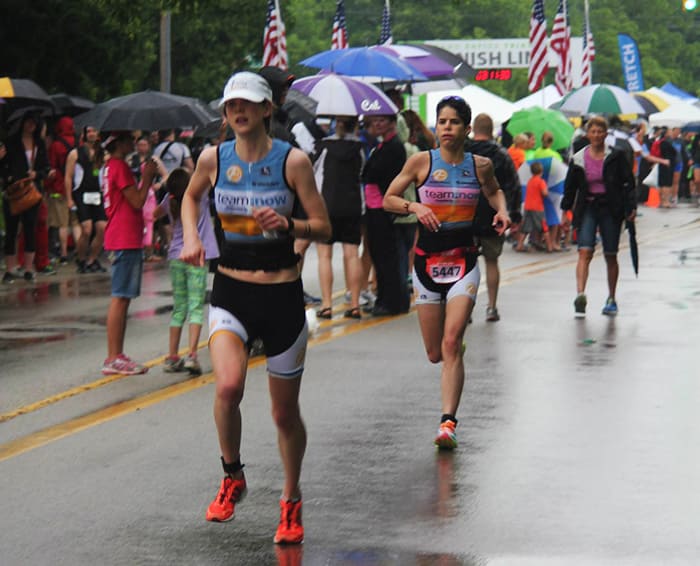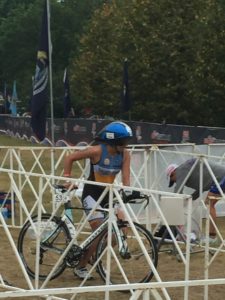 –By Todd Anthes, Team OAM NOW triathlete
–By Todd Anthes, Team OAM NOW triathlete
Many a triathlete, including some more seasoned than others, have probably thought about how to choose the right race distance. The typical races are usually a close variant of one of the following:
 1. Sprint (0.5mi swim, 12.4mi bike, 3.1mi run)
1. Sprint (0.5mi swim, 12.4mi bike, 3.1mi run)
2. Olympic (0.93mi swim, 24.8mi bike, 6.2mi run)
3. Half Ironman (1.2mi swim, 56mi bike, 13.1mi run)
4. Ironman (2.4mi swim, 112mi bike, 26.2mi run)
5. Ultra (anything longer than Iron distance)
I can’t speak to the ultra-distance, as I don’t have that much patience, or training time, but I can speak to everything from Iron distance on down.
The first “rule” is that you don’t start with an Iron distance race. A proper build-up to competently undertaking an Iron distance event is likely a multi-year build of training intensity and volume. There are probably a few exceptions to the rule, but they are not you. Athletes come to triathlon for many reasons including the pursuit of variety in training; an injury in one of the disciplines in which the athlete concentrates (i.e., mandated cross-training); a friend or family member introduced the athlete to the sport, potentially through a triathlon relay; or simply the challenge. A smart move is for an athlete start with a sprint or Olympic distance event, most likely a sprint. Even if the athlete is a seasoned participant in one of the three disciplines, putting all three events is a challenge . . . especially if you are new(er) to one of the three. The sprint distance is a great way to break the seal of triathlon and become introduced to transitions, pacing, and nutrition. Maybe a first year triathlete could race 3-5 sprints distance events over a first triathlon season culminating in an Olympic distance event.
Another consideration, if not a recommendation, is where to race. Some athletes find great comfort racing close to home for a sense of familiarity, including being able to sleep at home. Other more adventurous types might prefer the buildup to a destination event. And female athletes might even like to start with and all female event.
Building a “Olympic” season might not mean you are done with the Sprint distance. A strong recommendation is to race multiple distances in a season when you are starting out for different kinds of efforts, as well as to see what distances suit you. So, if your second or third season finds you branching out to finding success at the Olympic distance, your race and training schedules should not ignore the harder, shorter efforts found in the Sprint distance.
The jump from racing Olympic distance to Half Iron is a big one. I suggest a season dedicated to a build where you start with a solid training plan, and ending with your Half Iron event. A lot changes when you increase your longest race distance by 100%. Such a jump in distance requires, more precise training and recovery, nutrition, support at home, sleep, and a number of other things.
If you take the jump from ½ Iron to Iron, it makes sense to do this over a number of seasons. The quickest “proper” or measured jump to Iron might be a four or five-year span, with the last two years racing multiple ½ Iron events in a season. I know the die-hard athletes to whom rules don’t apply will ignore such advice, but even a runner will tell you that if you are a 5K runner and want to try a marathon, if you want to be able to progress beyond the goal of finishing (a notable goal in itself) and truly race the distance, a training plan that allows your body to adapt to the longer stresses is advisable.
Not everyone feels the need to climb the ladder of triathlon distances, but if you do, give your body and mind the proper base before climbing to fast. And do yourself a favor, do a ton of research on the topic, or better yet, consult a qualified coach.
The post Picking the Right Triathlon Distance appeared first on Team Athletic Mentors.
 Athletic Mentors
Athletic Mentors